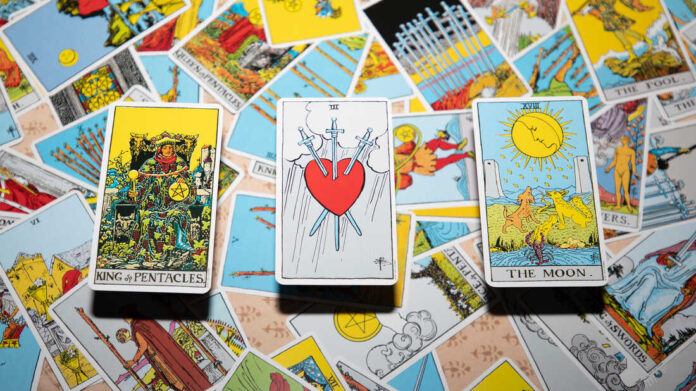Tarot cards have long been consulted to obtain guidance, find focus, or help resolve a specific issue. Whether you want to know how best to pursue your career goals, if the current person you’re dating could be ‘the one,’ or to check that you’re on the right track regarding a complicated family situation, the cards can help.
Many people are surprised to learn just how many different types of tarot readings there are. From a simple single card Yes or No reading to a complex spread that takes into account past influences and hopes and fears, there are plenty to choose from. So how to know which is the best one for you? Find out below.
Yes or No Tarot
If you have a simple and very specific question, then a single card, Yes or No reading, could be perfect for you. Even as a beginner, you can do this reading for yourself, or you may wish to consult a free Yes or No tarot online tool. These are very easy to find and are great as a quick way to help clarify your thoughts on the go. Whether you have a reading online or by manually picking a card at random from the deck, the process is pretty much the same: concentrate on your question – say it out loud if it helps – and then pull a card from the deck (or click on it).
As an example reading, say your question was ‘should I apply for a promotion at work?’ and you pull the Ace of Wands from the deck, then this indicates that now is a great time for positive action, as an exciting new opportunity could be about to present itself, but it’ll be one of your own making.
Often, however, a one-card reading won’t provide the depth that you may need, especially if your question is more complex. Even relating to the above question, a wider reading could have gone on to reveal some important additional information. For example, perhaps further cards would suggest that you’re burning the candle at both ends at the moment, and so, for the best chance of success, it’s vital to put into place a restorative wellness routine to get yourself into the best shape, physically, mentally and emotionally, for the rigors of a new job.
Past, Present, and Future Spread
Another easy reading that’s used by beginners and seasoned tarot practitioners is the three-card Past, Present and Future spread. This reading is great for those who would like a more detailed answer to a fairly generalized question. It’s perfect if you would like an overview of where, say, your romantic life is heading right now or guidance on how to manage your finances.
You (or your reader) simply need to mix the cards as usual and focus on the area of your life you wish for help with. Keeping this in mind, choose three cards from the deck and turn them over, laying them in a line from left to right. The first card represents the past, the second the present, and the third the future.
Here’s an example reading. You’re wondering about online dating and what it could hold for you. The first card you pull from the deck is the Five of Swords. This indicates that there could be deep anxiety connected to online dating as a result of feelings of having been very hurt, even humiliated, in the past, and that this is coloring your view of things now. The second card, representing the present, is The Star; this card is all about deep inner healing and the potential for peace and restoration. In this circumstance, it signifies an awareness that the past is the past and that you’re feeling a new hope for the future. The third card you pull, which relates to that future, is the Two of Cups: a meeting of minds – and the suggestion of an important relationship. In a nutshell: it’s looking great for you!
The Celtic Cross Spread
And for those wanting answers or guidance relating to a more complex question – or who wish to see multiple facets of an issue to figure out how to resolve it, the Celtic Cross spread is ideal. This reading uses ten cards. The first two, usually referred to as the ‘Center’ and ‘Crossing,’ relate to the crux of the situation; sometimes, this can be ‘inner’ and ‘outer’ – as in, how the situation or the person presents themselves and how things really are. The third card is the ‘Basis’ – the heart of the problem, issue, or circumstance.
Card four relates to the recent past, while card five points to the possible outcome. The near future is signified by the sixth card, and the seventh concerns the self, specifically, how something we are doing is impacting or affecting the situation. The eighth card points to how the environment, or those around us, are contributing to the issue, while the ninth represents the hope and fears we have relating to this same issue. Finally, the tenth card draws all of the others together to give the actual outcome.
Choosing a Tarot Reading
The nature of your question, and the level of depth that you’d like the answer to go into, will determine the tarot reading that is the most suitable for you to use. Above are three of the most popular types of reading, but there is a wide variety of spreads out there, as well as customized readings tailored to your requirements.
Take some time to get really clear on the question that you want to ask and the nature of the guidance that you wish to receive to ensure that you get a reading that will meet your requirements and provide you with the help and answers you need.










![Anso FG Reviews: UPDATED 2024 [ansofg.com] Anso FG Reviews UPDATED 2024 [ansofg.com]](/wp-content/uploads/2023/12/Anso-FG-Reviews-UPDATED-2024-ansofg.com_-100x70.png)







